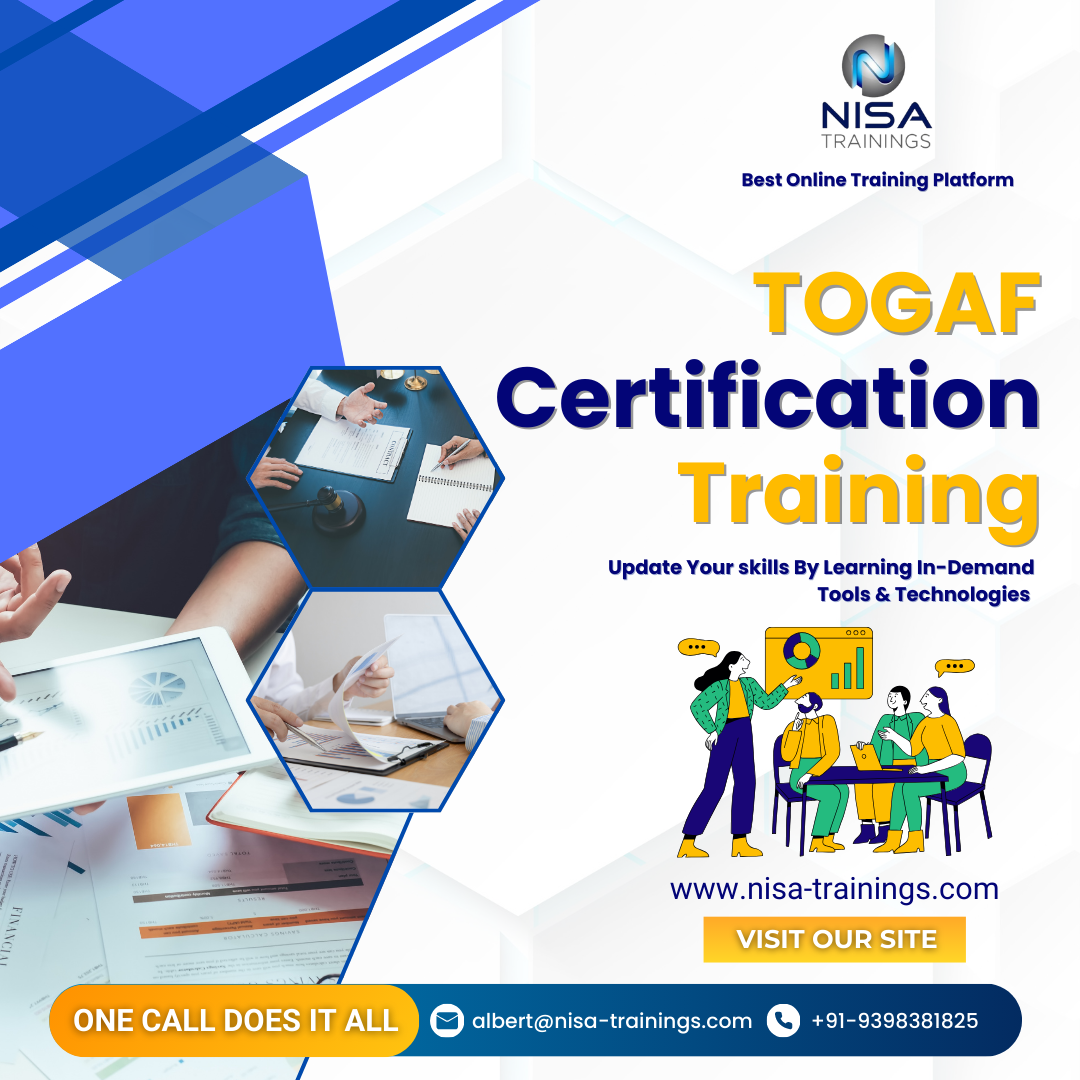TOGAF Certification Training

Why should you choose Nisa For TOGAF Certification Training?
Nisa Trainings is the best online training platform for conducting one-on-one interactive live sessions with a 1:1 student-teacher ratio. You can gain hands-on experience by working on near-real-time projects under the guidance of our experienced faculty. We support you even after the completion of the course and happy to clarify your doubts anytime. Our teaching style at Nisa Trainings is entirely hands-on. You’ll have access to our desktop screen and will be actively conducting hands-on labs on your desktop.
Job Assistance
If you face any problem while working on TOGAF Certification Course, then Nisa Trainings is simply a Call/Text/Email away to assist you. We offer Online Job Support for professionals to assist them and to solve their problems in real-time.
The Process we follow for our Online Job Support Service:
- We receive your inquiry for Online Job
- We will arrange a telephone call with our consultant to grasp your complete requirement and the tools you’re
- If our consultant is 100% confident in taking up your requirement and when you are also comfortable with our consultant, we will only agree to provide service. And then you have to make the payment to get the service from
- We will fix the timing for Online Job Support as mutually agreed by you and our consultant.
Course Information
TOGAF Certification Training
Duration: 25 Hours
Timings: Weekdays (1-2 Hours per day) [OR] Weekends (2-3 Hours per day)
Training Method: Instructor Led Online One-on-One Live Interactive
Sessions.
COURSE CONTENT :
1. Introduction to TOGAF
- What is TOGAF?: Overview of the TOGAF framework and its role in enterprise architecture.
- Benefits of TOGAF: How it aids in the alignment of business and IT strategies.
- TOGAF 9.2 Structure: Key components of TOGAF, such as the Architecture Development Method (ADM), Enterprise Continuum, and the Architecture Repository.
2. Architecture Development Method (ADM)
- Phases of ADM: Detailed breakdown of each phase, which includes:
- Preliminary Phase: Framework and principles.
- Architecture Vision: Define scope and objectives.
- Business Architecture: Develop business architecture.
- Information Systems Architectures: Develop data and application architectures.
- Technology Architecture: Develop technology architecture.
- Opportunities and Solutions: Identify and assess solutions.
- Migration Planning: Develop migration plans.
- Implementation Governance: Implement and monitor architecture.
- Architecture Change Management: Managing architectural evolution.
- ADM Deliverables: Key documents and outputs produced in each phase.
3. Core Concepts of TOGAF
- Enterprise Continuum: A framework for structuring and classifying different architectures.
- Architecture Repository: Central repository to manage architectural assets and deliverables.
- Architecture Views and Viewpoints: Understanding how different stakeholders view the architecture.
4. Architecture Governance
- Governance Framework: Establishing governance to ensure that the architecture is developed and maintained in accordance with business requirements.
- Architecture Board: Roles and responsibilities of the architecture governance body.
5. TOGAF Content Framework
- Content Metamodel: Understanding the architecture building blocks and their interrelationships.
- Architecture Artifacts: Key documents and deliverables produced through the architecture process.
- Reference Models: Frameworks for reference architectures (e.g., the TOGAF Technical Reference Model (TRM)).
6. Stakeholder Management
- Stakeholder Identification: How to identify and manage stakeholders.
- Communication and Engagement: Ensuring alignment between architecture outputs and stakeholder expectations.
7. TOGAF Implementation
- Implementing and Adapting TOGAF: How to apply the TOGAF methodology within an organization.
- Tailoring TOGAF for Different Organizations: Adapting TOGAF to meet specific business needs.
